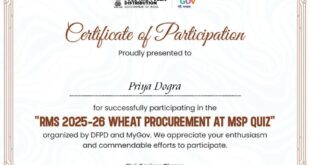Enroll Here: Computer Vision and Image Processing Specialization Certification
Computer Vision and Image Processing are closely related fields within the broader domain of computer science and artificial intelligence. They both deal with the analysis, manipulation, and understanding of visual data, typically in the form of images or videos. Here’s a brief overview of each field:
Computer Vision:
- Definition: Computer Vision is a subfield of artificial intelligence that focuses on enabling computers to interpret and understand visual information from the world, much like humans do with their eyes and brains.
- Goals: The primary goal of computer vision is to extract meaningful information and insights from visual data. This includes tasks like object recognition, image segmentation, facial recognition, motion analysis, and scene understanding.
- Applications: Computer vision finds applications in various domains, including autonomous vehicles, medical image analysis, surveillance, augmented reality, robotics, and more. It enables machines to perceive and interact with the visual world.
Image Processing:
- Definition: Image Processing is a broader field that deals with the manipulation and analysis of images using algorithms and computational techniques.
- Goals: Image Processing encompasses a wide range of operations performed on images, such as enhancing image quality, removing noise, correcting color, resizing, and extracting features. Its primary goal is to improve the visual information within an image or prepare it for further analysis.
- Applications: Image Processing has applications in various fields, including medical imaging (e.g., MRI and X-ray analysis), satellite imagery, digital photography, remote sensing, and more. It plays a crucial role in improving the quality and interpretability of visual data.
In summary, Computer Vision focuses on higher-level tasks like recognizing objects or understanding scenes from images or videos, while Image Processing deals with the lower-level operations used to preprocess, enhance, and manipulate images to make them suitable for analysis or presentation. These fields often overlap, as many computer vision tasks involve image processing steps to prepare and clean the visual data before extracting meaningful information from it.
Question 1: What is the primary goal of Computer Vision?
- Speech recognition
- Text analysis
- Image understanding
- Data compression
Question 2: Which of the following is NOT a fundamental step in image processing?
- Image enhancement
- Image acquisition
- Image understanding
- Image compression
Question 3: Which filter is commonly used for edge detection in image processing?
- Gaussian filter
- Median filter
- Sobel filter
- Low-pass filter
Question 4: In image segmentation, what does the process of “clustering” involve?
- Grouping similar image regions
- Reducing image noise
- Enhancing image contrast
- Resizing the image
Question 5: What is the purpose of the Hough Transform in computer vision?
- Image smoothing
- Object recognition
- Image compression
- Color correction
Question 6: Which algorithm is commonly used for face detection in images?
- K-Means Clustering
- Support Vector Machines (SVM)
- Haar Cascade Classifier
- Principal Component Analysis (PCA)
Question 7: What is the main purpose of the Fourier Transform in image processing?
- Image compression
- Image rotation
- Frequency domain analysis
- Image segmentation
Question 8: Which image format supports lossless compression?
- JPEG
- PNG
- GIF
- BMP
Question 9: Which technique is commonly used for removing the background from an image in computer vision?
- Histogram equalization
- Morphological operations
- Background subtraction
- Edge detection
Question 10: What does the acronym “OCR” stand for in the context of computer vision?
- Optical Character Recognition
- Object Classification and Recognition
- Optical Color Rendering
- Object Coding and Retrieval
 Priya Dogra – Certification | Jobs | Internships
Priya Dogra – Certification | Jobs | Internships



